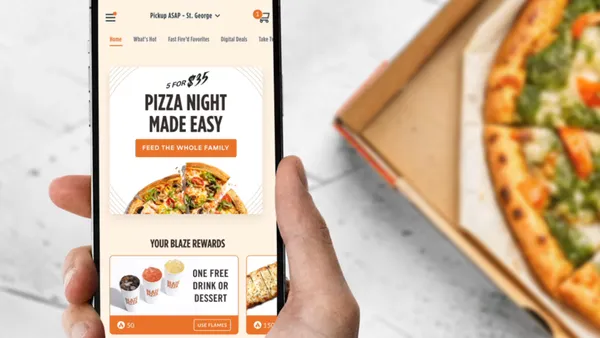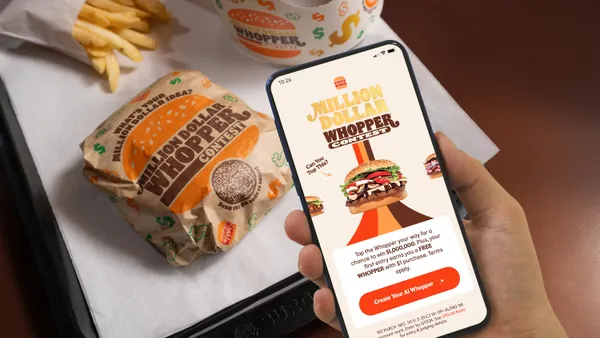The restaurant business plan is a crucial first step in turning an idea for a restaurant into an actual business. Without it, investors and lenders will have no way of knowing if the business is feasible or when the restaurant will become profitable. Business plans span dozens (or even hundreds) of pages, and due to the stakes that lie within the document and the work required to write it, the process of writing a restaurant business plan can threaten to overwhelm. What are the essential elements that make up a restaurant business plan? These 8 sections are fundamental to creating a successful business plan to pitch to investors and lenders.
The 8 Essential Sections to Include in a Restaurant Business Plan
1. Executive Summary
The executive summary section provides a 1-2 page overview of the restaurant and its business model. While the details of how the restaurant will succeed will be explained throughout the business plan, this section will both prove the legitimacy of the restaurant idea while encouraging investors to enthusiastically read through the rest of the plan. Some specific topics that might be covered in the executive summary include:
- The restaurant name, service type and menu overview.
- A quick mention of why the leader of the restaurant business is positioned to help it succeed.
- A brief overview of the restaurant’s competitive advantages and how they will help the business thrive in its target market.
- Expected break-even point and sales forecasts for at least the first year.
2. Leadership Team
This section introduces readers to the team that will run the restaurant. Some people who might be worth including here are the restaurant’s owner(s), other investors, franchise representatives, managers and/or back-of-house leaders. Operators can include headshots of the leadership team to enhance the quality of the business plan and put faces to names.
3. Restaurant Business Overview
This section introduces the reader to the restaurant’s concept. It should paint the picture of what potential guests can expect when they walk through the door, pull up to the drive-thru or place an order on the restaurant’s website.
Mission Statement
What is the restaurant’s mission? This section should boil down the purpose of the restaurant’s existence in a catchy sentence or two.
Menu & Cuisine
This section explains what kind of food will be sold at the restaurant, from the overall cuisine type to a few example dishes.
Service Style
Is the restaurant full-service, fast-casual, drive-thru only or some combination of these concepts? It should be explained why that concept was selected and – if unique – how the guest ordering process will work.
4. Industry & Market Analysis
This section compiles research that’s been done on the industry, the location the restaurant will occupy and those the restaurant will serve. The more detail provided in this section, the more valid the conclusions reached in the financials section will appear to be.
Industry Overview
The industry overview serves as a snapshot of the industry and why now is the right time to open up a restaurant (and pursue the chosen restaurant concept). Specific research to support these claims should be included and cited.
Location Overview
This section provides an overview of the area chosen to be the home of the restaurant. Specifically, an explanation should be given for why the general area (and if known, the specific location) of the restaurant was selected. Also, it should be communicated here if an existing restaurant location is being purchased and – if so – whether or not it will be rebranded.
Target Market
Who will be the restaurant’s regular customers – office workers looking for a grab-and-go lunch or families of four looking for a meal after a long week? This section should also estimate the size of the target market in the area alongside any demographic information known about people in that market.
Competitive Landscape
This section summarizes an analysis of the restaurant competition in the area and how it will compete. Supporting documentation such as SWOT analysis, a competitive matrix and/or a Porter’s Five Forces Analysis might go here (or in the appendix).
5. Marketing Strategy
The marketing strategy section highlights which marketing channels will be used to appeal to the restaurant’s target market. Examples of marketing strategies to include and expand on are:
- Brand Positioning
- Public Relations Strategy
- Social Media Strategy
- Direct Mail Strategy
- Website Marketing Strategy
- Community Engagement Strategy
- Video Marketing Strategy
- Newspaper/Magazine Strategy
- Paid Search Marketing Strategy
- Email Marketing Strategy
6. Operating Model
The operating model section is for going over the logistics of running the business and showing readers that all the pieces are in place to efficiently and accurately fulfill orders – all while retaining staff, keeping the restaurant safe and breaking even as soon as possible.
Service Model
The service model is the end-to-end experience of ordering at the restaurant in all of the different ways a guest will be able to (online ordering, in-person dining, etc.). Specifically, staff touchpoints with guests in both the front and back of the house should be identified.
Restaurant Technology
This section should give an overview of both in-store restaurant technology (such as a POS system) and any integrated software that helps restaurants get discovered online, like a website or an online ordering program.
In this section, there should be a list of types of technology that will be utilized to streamline operations in the restaurant, alongside an explanation of how they will enhance the guest experience and which technology providers the business will be partnering with.
Examples of restaurant technology that might be highlighted in this section include:
- Restaurant website management
- Online ordering system
- Gift card management
- Online catering platform
- Events management software
- Digital ordering & payment
- Digital loyalty program
- Restaurant point-of-sale (POS)
- Inventory management software
- Kitchen display screens (KDS)
- Payroll & HR software
- Scheduling and employee engagement software
Staffing & Hiring
What steps will be taken to hire, train and onboard a staff of restaurant professionals? This section could include recruiting tactics, a rundown of the interview process, safety and training procedures, retention plays and the target staff size upon open.
Kitchen & Back-of-House
This section should contain a walkthrough of the restaurant’s kitchen operations strategy. Inventory management strategy, approach to food suppliers and a list of required kitchen tools and equipment should be covered.
7. Financial Overview & Projections
At the end of the day, investors need to know when and if the restaurant will be profitable. This section will provide them with that information.
Opening Cost Overview
This section should provide a thorough explanation of how much the restaurant will cost to open. It should be exhaustive so investors know exactly where their money is going. If needed, a complete opening cost outline should be provided in the appendix.
Sales Forecast
Included here should be a forecast of how much revenue the restaurant is projected to make. As a benchmark, this forecast should be provided for the first twelve months of business and/or until the break-even point is reached. If needed, a more in-depth sales forecast broken down by month/quarter can be provided in the appendix.
Pro Forma Income Statement
The business’s profit or loss during this early period should be projected with a pro forma income statement. It’s important to put as much work as possible into this document to set realistic goals for investors based on research and quotes from vendors. Since the P&L statement will likely be a one-sheeter, it might make sense to briefly summarize the time period and bottom line reflected in the document and to attach the full version in the appendix.
Break-Even Analysis
The projected break-even point in both dollars and number of days should be declared in this section. Aim to be as objective as possible in the analysis, as investors will likely pay close attention to what’s in this section.
8. Appendix & Supporting Documentation
Lastly, any and all supporting documents referenced throughout the plan should be included in this section, including (but not limited to):
- Financial statements, graphs, tables, charts and/or projections.
- Photos or renderings of the restaurant location.
- A sample menu.
- Photos of the restaurant website and/or online ordering platform.
- Floor plans.
- References from colleagues in the restaurant industry.
How to Get Started
BentoBox has created a restaurant business plan template for aspiring restaurant owners. With section prompts for business plan essentials like financial projections, market analysis and a restaurant operations overview, this template makes creating a business plan significantly more manageable. Included is a professionally designed, customizable version of the template on Google Docs. Restaurants can download the template, make a copy and tailor it to their specific concept.
To learn more about how BentoBox can help your new restaurant online, sign up for a free demo today.










